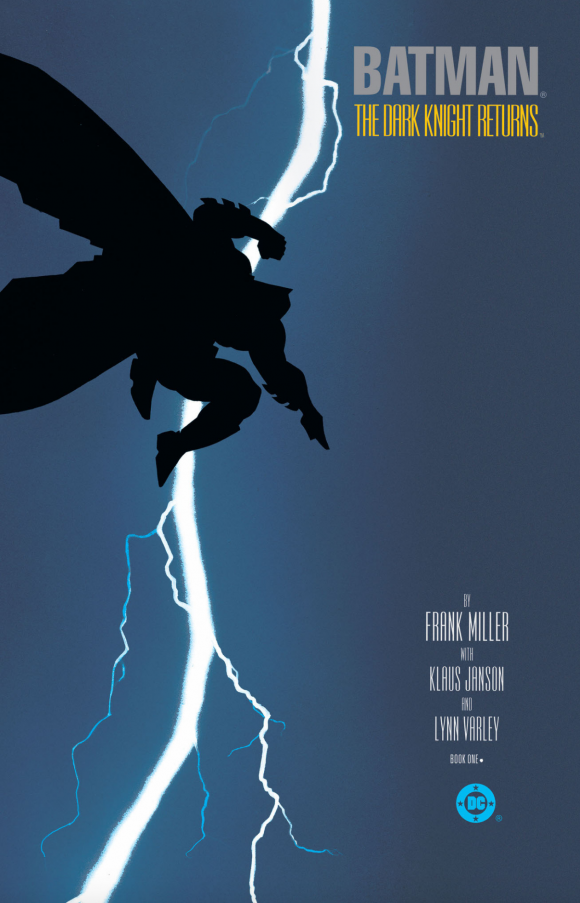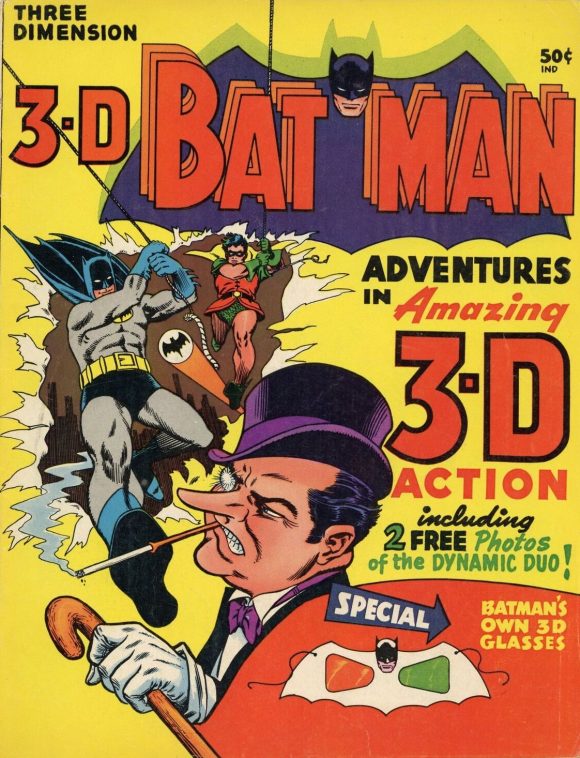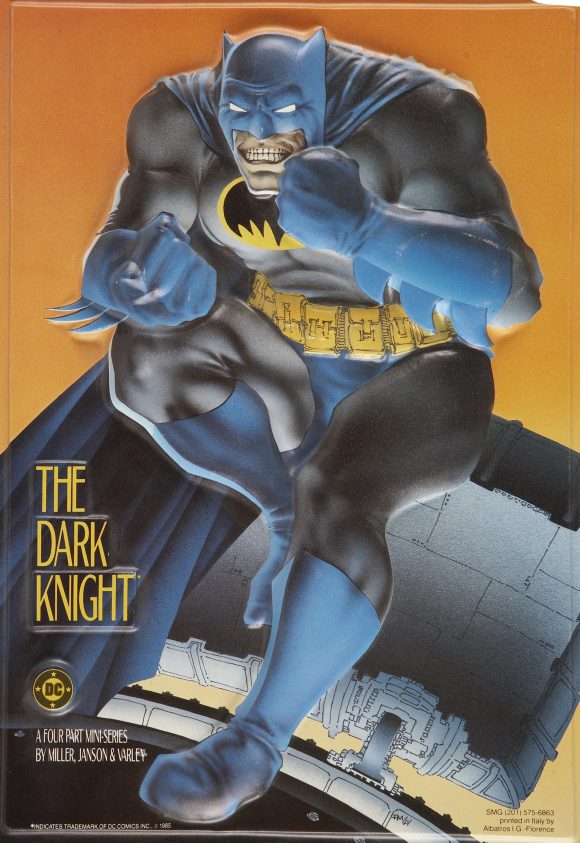An EXCLUSIVE view from the inside by PAUL LEVITZ…

—
UPDATED 3/20/23: This first ran in 2021. It’s a good one, folks. — Dan
—
The Dark Knight Returns #1 was released 35 years ago March 20, making this the anniversary of a major turning point in comics history. To mark the date, we’re publishing two columns: One about the graphic novel’s mixed legacy, by 13th Dimension columnist Fred Van Lente (click here), and the other by former DC exec Paul Levitz about the company’s inner workings the day Issue #1 was released, which is below. For past commemorations, click here. Dig it. — Dan
—
By PAUL LEVITZ
Dark Knight Returns #1 was vastly under-ordered. Retailers and distributors had been over-optimistic about Frank’s Ronin (in some ways his most comparable previous project in format… and DKR was going to go out even slightly more expensive, at $2.95 because we had added a spine) three years before and cautiously ordered, if memory serves, about 87,000 copies. Probably also a sign that we hadn’t managed to communicate our internal enthusiasm.
We went ahead and gambled heavily, printing 125,000… a big enough overprint that if we were wrong, we could actually lose money on the project.

In a timing coincidence, the DC management team was off-site at a retreat as the issue hit the stores. We often used a conference center north of New York City called Tarrytown House, which had a lovely old mansion on the premises with a great, comfortable old library room that served us well to talk and plan.
In those pre-cell phone days, the fact that there was no phone inside the mansion meant that we were pretty much out of communication — except for occasional bulletins hand-carried up from the main house by one of the members of the team along just to handle logistics of the meeting.
As the day progressed, we were getting word of absolutely crazy levels of reorder; everything we had printed was gone, and the distributor orders were streaming in. Bear in mind, in the days of multiple distributors serving the comic shops, it wasn’t unusual for a retailer to place orders for a hot book with several distributors in hope of scoring copies, so a “real” need for one copy could appear to be two or three.

It was good news, EXCEPT we hadn’t done a second printing of a comic for decades. I think the last may have been the Batman 3-D comic magazine in the ’60s fad, or it may even have been one of the earliest Superman titles in the Golden Age. All long before comic shops and serious collectors.
So there was a real debate around the room about whether we should print more. Were we going to be unfair to collectors who had bought second, or multiple, copies in hope of appreciation? They were an appreciable portion of our audience at the time, we thought. If we didn’t, were we going to lose out on the biggest opportunity DC had since the comic shop market began?
Sounds silly now, but then it was a serious conversation between Jenette Kahn (then president and publisher), Dick Giordano (head of our editorial team), Bruce Bristow (head of our marketing team), Joe Orlando (then running our special projects), probably a couple of others whose names you might not recognize as easily, and me (executive VP at that time).

Store display
SPOILER ALERT: We decided to go ahead and print more (I forget how many), and labeling them in the indicia as a second printing. Readers would be our priority, with respect to collectors taking second place (surely first printings would be much more collectable than second?).
Ultimately, we’d have to do four printings of that issue, and I think reach a total of about 400,000 copies. A massive number for an expensive book (our regular titles were 75 cents), an emerging market (that was around the time comic shops would pass the newsstand in sales), and a publisher that was a distant No. 2.
And of course, it was just the beginning. The trade editions would really change the field, establishing the graphic novel format in America (along with Watchmen and Maus).
An unforgettable comic, and an unforgettable day.
—
MORE
— DARK KNIGHT RETURNS: A Storytelling Landmark — Whose Cracks Show 35 Years Later. Click here.
— The TOP 13 GREATEST BATMAN STORIES EVER — RANKED. Click here.

March 20, 2021
As a fan who ordered a subscription, I was disappointed to receive a third printing in the mail. I would have expected subscribers to be given top priority, but perhaps my 15-year-old self was naïve.
May 16, 2021
I bought the subscription as well and got a first print of the first issue, but second print of the 3rd. 2 and 4 I got first print. I don’t know if I would have noticed at the time, but when I realized there were multiple prints I would have been disappointed as well.
March 22, 2023
Ditto. Still mad about it, it seems.
March 20, 2021
Speaking as one of less than a hundred souls back in 1973 who was in on the ground floor of Phil Seuling working out a deal with Sol Harrison to establish a first drop point from World Color Press, Sparta to Seagate, Coney Island, NY, the name of the game was speculation seeking higher returns on “investment” that the first decade (plus) when Phil added in Code Comics in to an already existing “underground” distribution system begun summer1968 with nexus origins of Print Mint taking Zap Comics and other alternative comix intonational distribution and inside comics fandom when GB Love opened Ye Olde Fanzine Shop inside the pages of once upon a time center of a certain comics universe now in a past almost half a century ago now.
initial aspects begun circa 1968 of what we came to call the Direct Market was for reading, building new readers rebuilding from an ID system which came off the rails in the collapse wake of the 2nd largest glut following the national Bat-Mania Fad which took the nation by storm for almost two years
As many of the 900 IDs then in the USA slowed down pushing the 12 cent lowly comic books out the tie lines, many stopping comics altogether, demand was growing in need of servicing expanding as comic book dealers began classified advertising in Feb 1966 Marvel Comics.
By turn of the decade the concept of an “honor” system of the affidavit returns no longer being hand counted which led to huge influx of even more fraud which kept on growing. Destroying (actual) best seller titles like Adams’ Green Lantern Green Arrow and his stint on X-Men; Kirby’s New Gods and Forever People (Not MM or JO which were not speculated upon very much), Starlin Warlock, other titles.
Phil Seuling’s experiment pulled those speculators out of the ID system placing them more under control as a “Direct Market” system began growing with more distributors entering the then virgin territory areas being developed.
Many Sub-Distributors cranked up operation which enabled many more comic book stores to open. And ever onwards the speculator mentality kept growing taking on a life of its own
WIth Dark Knight Returns doing the massive reprints expanding the concept of catering to readers, the strong current of pushing the DM along away from reliance on large speculator ordering was attempted.
And showed it could work. Watchmen has been in print for ever. Batman: The Killing Joke under went a ga-zillion printings. A stand alone shorter GN
By the time B:TKJ was being solicited I had phased out of the heavy speculation I had been doing for almost 20 years ordering 7000 green cover first printing leaving them cover price but one per person knowing most all my competitors would sell out of this $4 one shot comic book.
As they kept clamoring for more printings, I was building my reader base by keeping mt green first prints cover price.
I had learned from the experiences of how The Dark Knight Returns printings had gone when the product was of the highest quality.Stuff that would literally sell forever. Yes, this comic book was seminal in the evolution of what used to be the Direct Market
March 21, 2021
Bought my copy first edition back in the good old days active duty USAF when the nearest comic shop was a two hour hundred mile drive.
March 21, 2021
Having no LCS at the time i ordered by subscription. Imagine my surprise, when all was said and done, DC had sent me 4 complete sets. They just kept coming. 3 first print sets and one 2nd print set. I still have 2 sets in the original wrapper.
March 22, 2021
Dark Knight Returns #2 was my first comic I ever bought in an actual comic shop— it was the last one and it caught my eye. The store owner said it was good stuff and it would be gone next week so grab it now. Still my favorite comic story of all time. Frank Miller, Klaus Janson and Lynn Varley made a masterpiece!!!
March 22, 2021
While DK #1 was momentous and yes, vastly under ordered – what people don’t look at is how numbers for Batman at the time were (fairly low – remember this was before any movies) and even Miller’s work in general was not as huge. Daredevil was a middling title for Marvel, yes some people overordered Ronin, but I don’t think there were 75-85K orders for any issue of it. Distributors also ordered heavily on extras (I worked at Capital City at the time) and most were snapped up by the time it shipped. It also got a tremendous amount of press which drove the sales.
They were printed @ Ronalds in Canada, (packed 100 to a box) while most other books at the time were printed @ World Color in Sparta (packed 300 to a box and tied in bundles of 50 with string). And something that probably gets missed in comic history is that Dark Knight #2 came out the same day as Watchmen #1 (also printed at Ronalds) the following month. That was a hell of a release day.
March 20, 2023
I somehow ended up with one of those store displays pictured in the article. Not sure how, as I was mail order (Westfield Comics) at the time. Perhaps they randomly sent it to me.
March 21, 2023
Was it released in 1986 or 1988?
March 21, 2023
1986
March 23, 2023
I just pulled out my copies and I can’t find anything that indicates 1st, 2nd, 3rd printing etc. Is it a first printing if there is no indication of a later printing?
March 31, 2023
Check with your local comics shop to make sure, maybe.
For decades I assumed my beloved 4-issue set was marred by a second printing of #2 since I dimly recalled it having that indicated by a shop’s sticker on the mylar bag it was sold in. It was only when I offered them up for purchase by a different store that I learned I had been sitting on original editions this whole time!